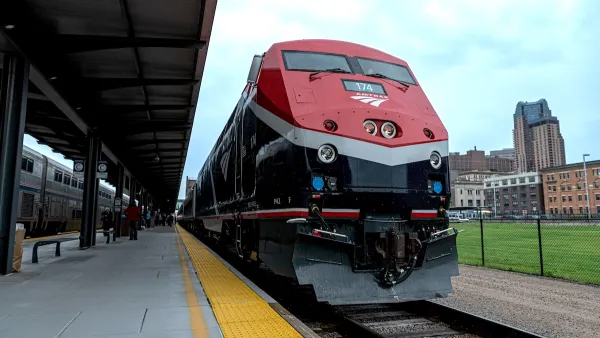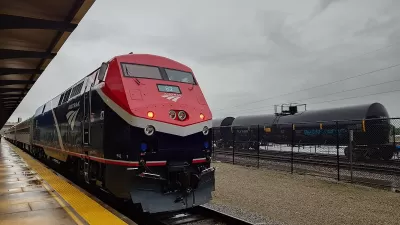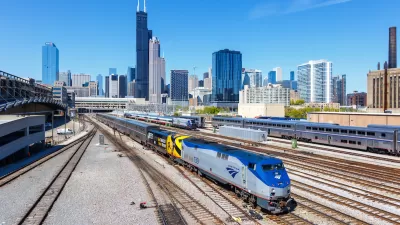The Borealis line provided more than 18,500 rides since its first trips in May.

A new Amtrak passenger rail line linking St. Paul, Minnesota and Chicago turned a profit in its first month of service, a rare feat for the agency.
The Borealis line served over 18,500 passengers since it launched in May and took in $600,000 in revenue, writes Tim Harlow in the Star Tribune. The agency spent $500,000 on operations, making the Borealis one of two state-sponsored Amtrak lines (of a total of 30) to make a profit.
“Westbound trips out of Chicago saw slightly higher ridership with an average of 330 riders while eastbound trips carried about 288 passengers, according to Amtrak,” adds Harlow. “Officials say the Twin Cities-to-Milwaukee-to-Chicago route has high potential and could see even more passengers as the service matures. The line also serves several markets with colleges and universities, which could also attract students this fall, said Ray Lang, Amtrak's vice president of state-supported services.”
Other Amtrak routes also saw increases in ridership. “The Empire Builder, the other Amtrak route serving the Twin Cities, saw a 15% ridership growth from fiscal year 2022 to 2023. The train running from Chicago to the Twin Cities to Fargo-Moorhead and then to the Pacific Northwest cities of Portland and Seattle saw ridership rise from 303,500 to nearly 349,000 from October 1, 2022, to September 30, 2023, Amtrak figures show.”
FULL STORY: Amtrak's Borealis from Twin Cities to Chicago sees strong ridership, turns early profit

Planetizen Federal Action Tracker
A weekly monitor of how Trump’s orders and actions are impacting planners and planning in America.

Congressman Proposes Bill to Rename DC Metro “Trump Train”
The Make Autorail Great Again Act would withhold federal funding to the system until the Washington Metropolitan Area Transit Authority (WMATA), rebrands as the Washington Metropolitan Authority for Greater Access (WMAGA).

The Simple Legislative Tool Transforming Vacant Downtowns
In California, Michigan and Georgia, an easy win is bringing dollars — and delight — back to city centers.

Albuquerque’s Microtransit: A Planner’s Answer to Food Access Gaps
New microtransit vans in Albuquerque aim to close food access gaps by linking low-income areas to grocery stores, cutting travel times by 30 percent and offering planners a scalable model for equity-focused transit.

This City Will Pay You to Meet Your Neighbors
A North Kansas City grant program offers up to $400 for residents to throw neighborhood block parties.

Commentary: Our Silence Will Not Protect Us
Keeping our heads down and our language inoffensive is not the right response to the times we’re in. Solidarity and courage is.
Urban Design for Planners 1: Software Tools
This six-course series explores essential urban design concepts using open source software and equips planners with the tools they need to participate fully in the urban design process.
Planning for Universal Design
Learn the tools for implementing Universal Design in planning regulations.
Smith Gee Studio
City of Charlotte
City of Camden Redevelopment Agency
City of Astoria
Transportation Research & Education Center (TREC) at Portland State University
US High Speed Rail Association
City of Camden Redevelopment Agency
Municipality of Princeton (NJ)





























